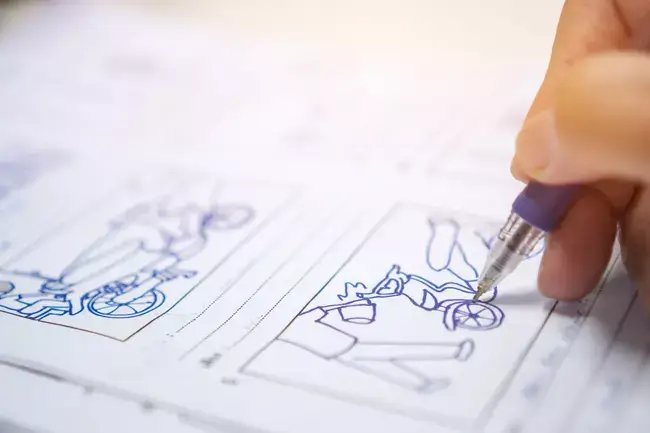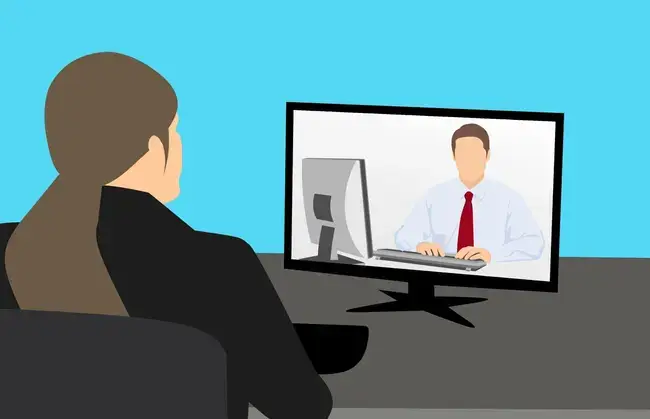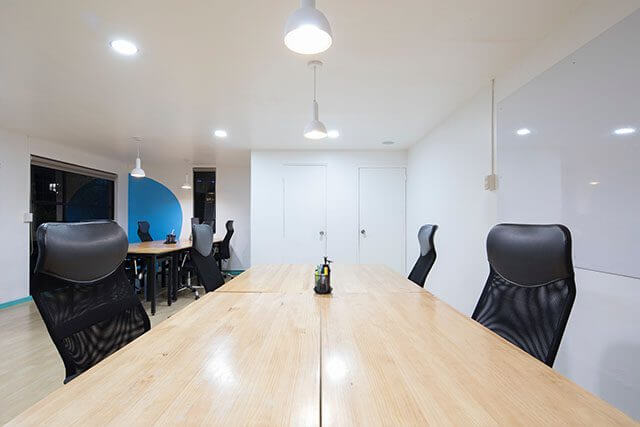Common Mistakes in Storyboarding and How to Avoid Them

80% of executives are changing or considering changing how their meetings work.
Meetings have long been a source of contention. Some argue they are necessary for organic brainstorming and collaboration. Others wager that they are mostly unproductive and waste workers’ time.
It’s no surprise then that thought leaders are always trying to find new ways to make meetings meaningful and efficient. One technique gaining popularity is planning via storyboarding.
Pioneered by illustrators, this method of visual planning sees users outline a linear story end to end. Though powerful in business conversations, many make mistakes in storyboarding. Small errors, like trying to perfect the artwork, entirely miss the point of this tool.
Storyboarding in business or education should be about telling a linear story. Doing so makes it easier to spot areas you could improve your efforts along the way.
Whether helping students pass exams or fine-tuning a marketing campaign, it shows you how to improve. That is its purpose; how storyboarding works to identify problems and solutions.
How can you reap the benefits of storyboarding? Read on for how to avoid eight mistakes that slow it down and compromise its effectiveness.
1. Perfecting the Aesthetic
When many people imagine a storyboard, their mind jumps to beautiful artwork. They conjure up images of talented illustrators planning the next blockbuster.
That is not your goal!
One of the greatest benefits of storyboarding is how fast the process is. Fast sketches let you draft and plan, then start over. You can run through several iteration cycles of your storyboard in just one meeting.
If you focus too much on making it look perfect, you lose this benefit. The process slows to a snail’s pace, and the ideas along with it. Slowing everything down hampers creativity and dynamic brainstorming.
Storyboarding in business and education is not about creating art. Rather, it’s about helping teams visualize a process and find areas where it can be improved. To that end, stick figures work just fine!
When to Perfect the Artwork
Of course, this is assuming your storyboard’s use is only internal. If your end goal is to present the visual aid to others, then it may be worth fine-tuning the images. To do so, you could contract an illustrator to level up your stick figures into something more engaging.
Nonetheless – your storyboarding process should still be simple. Don’t slow your teams down by perfecting simple sketches.
If your end goal is a presentation, allocate time to focus on the visuals later. You can perfect the aesthetic of your end product. But when in the creative phases, always keep it simple!
2. Including Too Much Text
Storyboards are a visual map of processes, whether in making a movie or a marketing strategy. If they get bogged down with text, they become bullet points with pictures.
Why could that be a problem?
As soon as you crowd your images out with too many words, people focus on the words. They give their attention to what they’re reading rather than the visual storytelling.
But the images are the power of the storyboard!
Visuals bring out emotions, ideas, and foster creativity. Images have even been proven to be more effective than words at helping us process concepts. They get the imagination going, which helps teams identify what is currently missing.
But if you turn your storyboard into a written checklist, it kills this creativity.
Then, it becomes much harder to create something new. Because their imagination isn’t involved, they aren’t visualizing a process in their mind and stumbling across the issues. They’re just reading a list with no direction for how to fix it.
Keep the words in the room. In the dynamic, evolving conversation about what to draw. But other than a brief caption, don’t put them on the storyboard.
3. Starting Without a Goal
Creating a storyboard without an end goal is like a movie studio sketching without a script. At the storyboarding stage, the process is still about brainstorming ideas. But you won’t accomplish much without a clear end goal in mind.
What should be the goal of your storyboard?
Typically in business, teams use storyboards to evaluate a process. The goal of doing so could be:
- Deciding how to restructure the process
- Finding areas in the process to add value for their customers
- Identifying previously overlooked problems in the process
What does this look like in practical terms? Imagine a team is evaluating their company’s hiring process. They decide that their goal is to both to find issues and areas to add value.
With these clear end goals in mind, they detail the process from beginning to end. In doing so, they may find that their onboarding process is too hands-off. Or they may find that the way they market the job role doesn’t reach all the right audiences.
As their storyboarding process had a goal, it accomplished something. They have identified areas they can improve.
4. Not Looking for Actionable Changes
This leads us to the next point – not looking for actionable change.
Don’t just use your storyboards to outline a process. The goal is not to simply map out what you already know.
Storyboards are used to find areas to improve. Pain points that need to be addressed or simply areas where their current solution isn’t good enough.
All this effort is wasted if you don’t end up with actionable changes!
For example, imagine a business storyboarding the customer experience from idea to sale. Perhaps the team has the goal of providing more information to customers about their services and products.
To do so, they map out the entire process. This enables them to identify where in the process they can add more value.
Therefore the change they decide to work on is not “adding more value to the customer’s research process.” That is not an actionable statement. It was their goal even before the storyboard!
Rather, with the storyboard, they identify not what to improve but how to improve. They spot areas where they can improve their customer experience, and how to do it. They may decide to:
- Provide more blogs on their website to help with customer research
- Start a marketing email campaign with snippets of helpful information
- Angle their marketing to provide more helpful information
Only if your storyboard leads to actionable change was it a worthwhile investment. But to do that, it needs to be as effective a process as possible. The following points explain how to make sure that happens.
5. Overcomplicating the Storyboard
To be effective, your storyboard shouldn’t be too elaborate. If you overcomplicate the storyboard, the areas you need to focus on will get lost in the noise. Then finding actionable goals becomes much harder.
There are two main ways to overcomplicate a storyboard: making it too long or too short.
Making a Storyboard Too Long
If your storyboard is too long, there’s likely too much going on. Perhaps you’re trying to evaluate a process that can actually be split into two parts. It’ll end up creating a narrative that’s too long to work on.
A common example of this is distance learning with the eLearning storyboarding process. 52% of graduates say they learn more in an online setting, so even post-pandemic it’s still a popular choice.
When teaching online, visual aids are a great way to keep people’s attention. But it’s all too easy for a teacher to try and cram in as much information as possible to maximize learning. That leads to the main points getting lost.
Storyboards, both for teaching and brainstorming, are more effective if they’re simple. If your storyboard is looking too long, split it up. It’s better to have two storyboards to dive deep into than one that overwhelms you.
Making a Storyboard Too Short
A short storyboard is generally a good thing unless it’s shorter than it should be. Then you’re likely trying to cram too much information in at once.
How can you tell if your storyboard is too short?
Look at each panel. Do they each illustrate just one point or multiple? If you’ve condensed multiple points into the same frame, it’s too short.
If each panel represents too much information, details will be missed. Fix it by spreading out the information into multiple panels. Once each one illustrates a single point, it’s the optimal length.
6. Storyboarding Abstract Concepts
By now, it’s very clear that storyboarding outlines a linear process. Because the system shows the visuals in a linear way, people can visualize the journey and spot what’s missing. To that end, storyboarding is not a solution to everything, especially not abstract concepts.
For example, say your team is tasked with improving in-office productivity. So far, that’s an abstract concept, not a linear story. So storyboarding is useless at this stage.
Only if you identify a linear story to work from can storyboarding help.
In this example, the team may decide to storyboard what an average worker’s day looks like. They could interview or survey the office so they have evidence to work from. Then, they could build a storyboard of an average worker’s day.
Once that visual is in front of them, they can work on finding a solution. When it’s then storyboarded, an issue may stand out that they can work to resolve.
In this case, storyboarding was a useful tool. But only because they turned their abstract concept into a linear process first.
7. Not Making the Process Collaborative
The best storyboards are an amalgamation of hoards of ideas. In a group setting, everyone jumps in with their own perspectives to build a complete picture. This collaboration is essential to ensure you didn’t overlook key details.
But wouldn’t it be simpler to build a storyboard by yourself?
Possibly. A group brainstorming session is never a quick endeavor. It would certainly save time to craft a storyboard on your own and work from there to identify problems.
But this solo approach will never yield the best results. Without the input of a group, each with its own insights, you will miss important points. And every point you miss is a missed opportunity for improvement.
8. Using a Physical Whiteboard
Whiteboards are often the first tool that springs to mind when thinking about brainstorming. They’ve been a meeting room staple for decades. But there’s a better way to storyboard with a team.
As explained, storyboarding should be a collaborative process. Therefore everyone should be able to get involved. A whiteboard gives one person too much dominion over the creative stages.
Instead, everyone should have access to sketching tools. The simplest way to do this is to give everyone access to pen and paper at the beginning of the session. That allows everyone’s creative juices to get flowing as the discussion evolves.
As soon as an idea comes to anyone, they can jot it down. They can draw their own versions of the ideas being discussed. Giving everyone a way to express and record their ideas leads to the best end product.
When you reach the point in the process where the team is agreeing on set stages, it’s time to create a master copy. Again, a whiteboard isn’t the best tool for this. Otherwise, your official records become haphazard photographs of it.
Instead, your master copy should be digital. Using an online digital whiteboard ensures your storyboard is shareable yet editable. It keeps the process fluid while looking its best.
How to Avoid These Mistakes in Storyboarding
Even small mistakes in storyboarding like these can compromise the method’s effectiveness. A successful storyboard, though, does more than avoid these mistakes. It inspires and excites the audience.
Start on paper. Then finalize your projects with a more professional tool. One that’s accessible, intuitive, and shareable.
To create storyboards that connect with people, sign up for free today. Our online whiteboard tools are versatile enough to work in the boardroom and the classroom. See how HuddleIQ’s software can transform your creative processes today!












